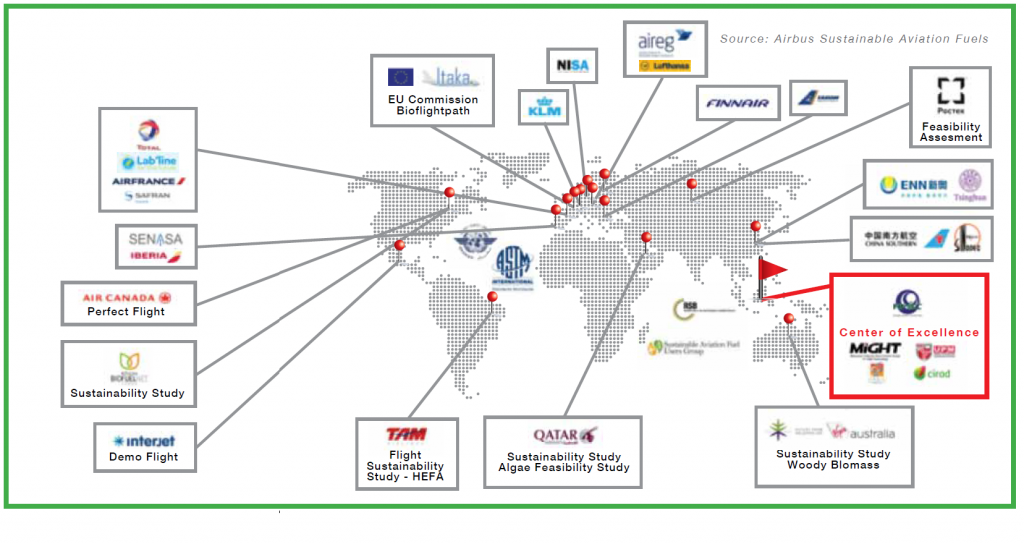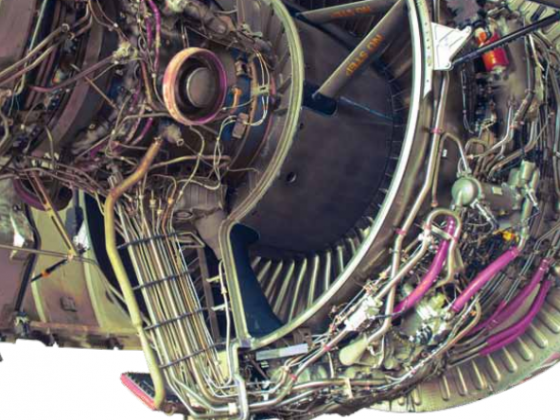by | Dr.Liew Kan-Ern, Deputy CTO Aerospace Malaysian Innovation Centre (AMIC)
Air transport has brought the world together and redefied words such as “far” and “long distance”. The aviation industry has made the world a smaller place, providing a platform of rapid global transport for passengers and goods, enabling globalisation of businesses and communities – and impact is still continuing.
The world today relies heavily on the aviation industry. In 2013 alone, the aviation industry transported over 3 billion passengers and over 40 million tonnes of cargo, such an economic impact accounts for roughly USD 2.4 trillion globally. Simply put, if the aviation industry was a country, it would rank in term of gross domestic product (GDP) as the 21st in the world, accounting for USD 606 billion GDP per year. A feat that is larger than some members of the G20, and it is estimated that in 2026 the aviation industry will contribute USD 1 trillion to the world’s GDP. The industry has become an integral part of today’s world, and as it grows, it brings together with it an increased sense of responsibility to make certain that its environmental impact is minimal. Currently, aviation industry contributes to around 2% of global CO2 emissions, or 705 million tonnes out of 36 billion tonnes emitted globally. A considerably by Dr. Liew Kan-Ern Deputy CTO, Aerospace Malaysia Innovation Centre (AMIC) viewpoints Securing Malaysia’s Sustainable Aviation 01/2015 low contribution when compared to other industry and transportation means, nevertheless, the aviation industry has committed itself through representative bodies such as the Air Transport Action Group (ATAG) and International Air Transport Association (IATA) to tackle the industry’s climate change impacts.
Tackling climate change
At the Aviation and Environment Summit organised by ATAG in 2008, aviation leaders embarked on an unprecedented commitment, which gave rise to the industry’s long-term plan to tackle its climate change impacts. The result of this commitment is the Aviation CO2 Roadmap that pledges the industry to:
- To improve fuel efficiency by 1,5% per year, on average, from 2009 to 2020
- Achieve carbon neutral growth (CNG) from 2020
- To reduce net emissions by 50% by 2050, from 2005 levels.
The aviation industry has a solid record in reducing its emission, with 70% reduction in CO2 emissions, 90% NOx (mono-nitrogen oxides), and 75% reduction in noise over the past 40 years. These reductions were achieved through four pillars of innovation:
- Product Technology
- Sustainable Fuel
- Operations and Infrastructure
- Economic Measures
These pillars are guidelines to promote and support innovative research and development in the aviation industry for new technology, new pathways for sustainable fuels, and improved operational efficiencies. Aircraft manufacturers are developing regional strategies and partnerships through value-chains, integrated services and to encourage best practises, such as the “Perfect Flight”. A Perfect Flight is known as utilizing the most efficient aircraft technology, optimized Air Traffic Management (ATM), optimized aircraft operations, and the use of air worthy sustainable alternative jet fuel. To date, Airbus has known to have achieved two Perfect Flights, the fist is a short-range commercial route with Air France from Toulouse to Paris – which achieved a 50% reduction in CO2 emissions; the second is a long-ranged commercial route with Air Canada, which achieved a 40% reduction in CO2, when compared to regular flights. These two accomplishments prove that substantial reductions in emission are possible with the proper innovator, catalyst and with strategic partners.
Aviation innovation
Out of the four pillars of innovation, the product technology and sustainable fuel pillars are the industry’s best bet in reaching the goals set out in the Aviation CO2 Roadmap. Examples of product technology improvements can be seen in the new generation of aircrafts with better fuel efficient, quieter and cleaner aircraft that is being ushered into service today. From Airbus, these are the A380s, A350 XWBs, and the A320 neo, which boast better aerodynamic efficiency, advance systems, and new generation of materials that are lighter. For sustainable fuel, these are drop-in aviation fuels which are produced from sustainable renewable resources. Sustainable fuel has the potential to reduce up to 80% of CO2 emissions per tonne of fuel, however, finding a suitable source with sufficient quantities to meet commercial aviation demands is still in progress. In parallel to the search, test flights with sustainable fuel blends are being performed to provide confidence and to validate its usage for certification and commercialization. To date, over 1,500 commercial flights have been flown with sustainable fuel, from processes which has been certified (Fischer-Tropsch, HEFA, and DSHC).
Malaysia’s Aviation innovation
In 2011, Aerospace Malaysia Innovation Centre (AMIC) was inaugurated by the Malaysian Prime Minister to foster aviation research and technology capabilities in Malaysia. As an industrially led non-profit organization that operates in collaboration with strategic industrial, universities and governmental partners, AMIC has two core research and technology focus, Sustainable Aviation and Factory of the Future. The two topics complements each other in driving the country’s innovation capabilities, and contribute to the global movement of aviation advancement. Factory of the Future focuses on new technologies and processes that will catapult today’s manufacturing plants to the future, these are technologies on virtual reality, digital technologies, 3D printing, and robotic automation.
The Sustainable Aviation activities in AMIC are part of the global network of Airbus Group and Airbus action worldwide on Sustainable Aviation, with particular attention on the sustainable fuel activities. Sustainable Aviation activities in AMIC has two main columns, sustainable fuel and bio-sourcing of materials for aviation. There are currently four ongoing research initiatives under the sustainable fuel umbrella, covering aspect of aviation fuel production from sustainable feedstock such as micro-algae and increasing its lipid/ oil yield, transforming waste to fuel, techno-economic analysis of the entire value chain from feedstock to fuel, and investigation of multiple feedstock options and conversion. These researches heighten the bio-aviation fuel development status of Malaysia, and are essential pieces to a puzzle that leads to the process of gaining accreditation, certification, and implementation. In addition, there are several new projects in discussion, which complements on-going studies, and advances the global efforts in the search for the solution for affordable, sustainable aviation fuel.

The introduction of bio-sourced material into the aviation industry will pave the way for green and recyclable materials, thus improving the industry’s sustainability and environmental impact, or the end-of-life of an aircraft. This column is part of a greater innovative drive to increase the eco-efficiency of aviation industry, its aircraft and the entire value chain. AMIC has placed key research projects in motion to develop bio-sourced composites and materials to validate the potential of such materials in the aviation industry. Not only is the source, treatment and development of the bio-source material important, but equally, the testing, stressing and validation of these bio-parts for aviation applications. New technology developments are long and complex, undergoing several development cycles before reaching a level of usable maturity. Bio-sourced materials for aviation is no exception, and it is hoped that one day the majority of aviation parts are able to be grown, processed and manufactured.
Closing
The Sustainable Aviation movement in Malaysia is championed by AMIC, whose mandate is to enable and drive Malaysia’s aviation research and development potentials. The on-going R&D activities have yielded encouraging results, and have provided Malaysia with a platform to contribute to the global movement and in achieving the aviation industry’s commitment towards Sustainable Aviation.

Reference
- IPCC Fourth Assessment Report: Climate Change 2007
- ICAO Environmental Report 2010: Aviation and Climate Change
- Aviation/Benefits Beyond Borders/ATAG 2014
- Airbus Environment: Sustainable Aviation – Aviation Environmental Roadmap 2014










